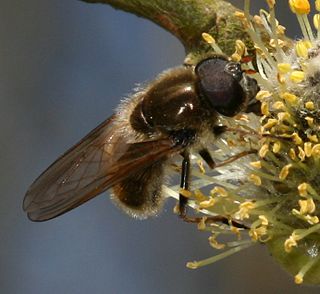
Cheilosia albipila is a European and Palearctic species of hoverfly. Like most Cheilosia it is black, and because of this may often be overlooked as a hoverfly. It is little recorded but probably widespread and common and maybe overlooked because adult flight periods are early in the year, before many hoverfly recorders are active.
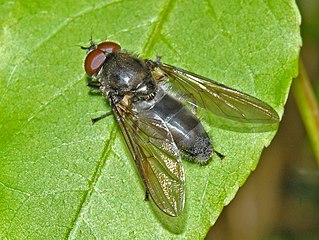
Cheilosia variabilis, common name figwort cheilosia, is a species of hoverfly belonging to the family Syrphidae.
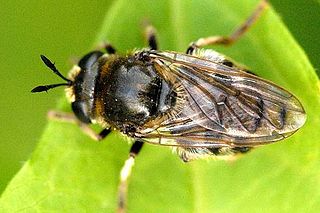
Microdon analis, is a species of hoverfly. It is found in the Palearctic. The distinctive almost slug-like larvae live in ants nests. The larvae are hemispherical in shape and heavily armoured. They are believed to prey on the eggs and larvae of a number of different ant species, notably Lasius niger and the Formica rufa group. These ants are usually found on heathland. However Schmid (2004) claims that Microdon analis and M. major which are cryptic species have been confused under the name analis. M.major is apparently associated with ants of the genus Formica, the other species, M.analis, with Lasius species.
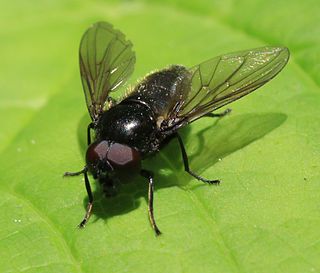
Cheilosia vicina is a hoverfly species found in the Palearctic.

Epistrophe grossulariae is a Holarctic species of hoverfly.

Cheilosia grossa is a widespread European species of hoverfly. Adults can be found in spring on sallow catkins and the larvae tunnel in the stems of various thistle species.

Cheilosia bergenstammi is a widespread European species of hoverfly. Adults can be found in summer visiting ragwort flowers and this plant is also the larval hostplant.
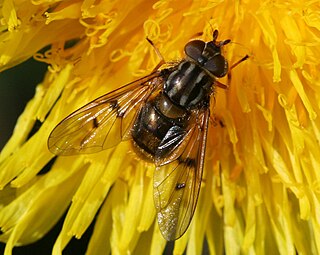
Ferdinandea cuprea is a European species of hoverfly notable for its brassy abdomen. The larvae have been found in sap from trunk damage on oak and ash.

Brachypalpoides lentus is a European species of hoverflies.

Eumerus funeralis or lesser bulb fly is a species of Hoverfly, from the family Syrphidae, in the order Diptera. E. funeralis appears in Peck (1988) as a synonym of E. strigatus (Fallen), but was reinstated as the correct name for tuberculatus Rondani, sensu auctorum by Speight et al. (1998).
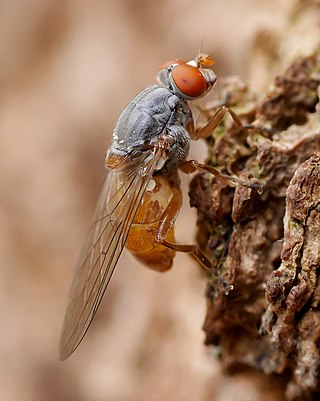
Brachyopa insensilis is a Palearctic species of hoverflies.

Cheilosia antiqua is a European species of hoverfly.
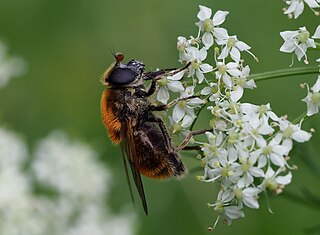
Cheilosia chrysocoma is a European species of hoverfly.
Cheilosia longula is a Palearctic hoverfly.
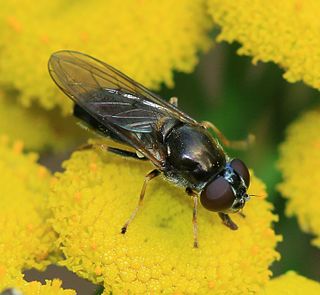
Cheilosia scutellata is a Palearctic hoverfly.

Cheilosia vernalis is a Palearctic hoverfly.
Callicera rufa is a Palearctic hoverfly.
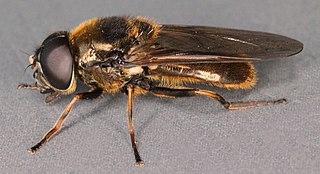
Cheilosia fraterna is a Palearctic hoverfly.
Cheilosia lasiopa is a Palearctic hoverfly. This species was previously misidentified as Cheilosia honesta.
Cheilosia nigripes is a Palearctic hoverfly.

















